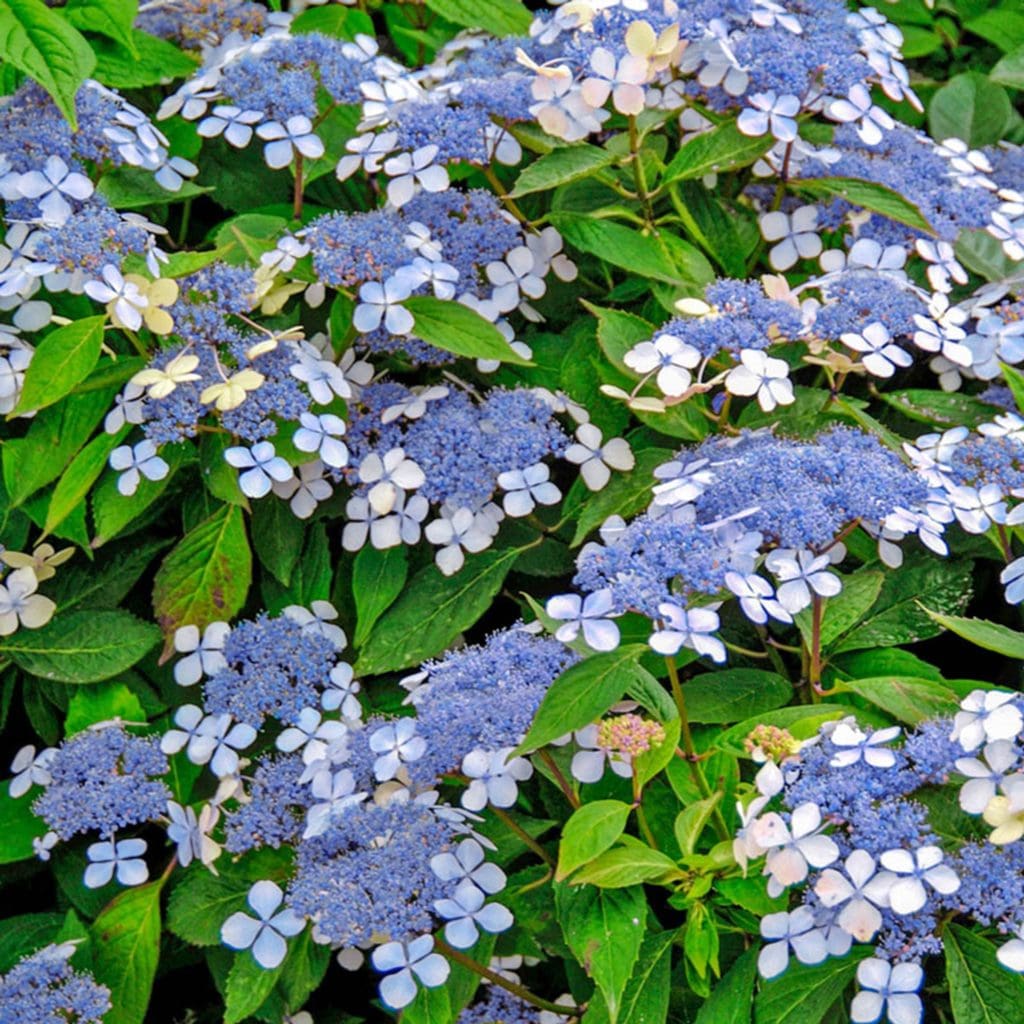With immense flower heads, hydrangeas have an old-fashioned charm that is hard to resist. Colors are beautiful, with clear blues, vibrant pinks, frosty whites, lavender, and rose. Easy to grow, these are a summer staple in our area, a must in any partly shaded area.
Hydrangeas don’t mind our sandy soil, you can see them growing all around our communities. Plus, they are salt tolerant! But, there are slight differences in care needs and best growing conditions, depending on which of 5 (generally) different types you might have.

The two most common here in southern Delaware are the Big Leaf and Panicle hydrangeas. The Big leaf ones are the ones we see whose color might change depending on your soil. They have, obviously, large rounded leaves, and most have the big mop head type flowers. Some have types a lace cap flower, smaller, and to my eyes, far more refined and pretty. Big leaf hydrangeas like to grow in part shade – they do like some morning sun but will grow in full shade. They just won’t bloom as well. They also prefer even moisture, a weekly watering if it doesn’t rain will help keep them healthy. They might wilt midsummer from the heat but will usually recover later in the afternoon. These are part of the group of hydrangeas that bloom on old wood – last year’s growth. Prune just after flowering in summer, if you prune after August 1, you’ll be cutting off next year’s flower buds. Repeat-blooming hydrangeas, such as ‘All Summer Beauty’ and ‘Big Daddy,’ flower on both old and new growth. These can be pruned almost anytime. These, like all hydrangeas, like a good layer of compost, then a very good layer of mulch covering the soil. The compost will enrich the soil, and the mulch will keep the roots cool. You can get soil acidifiers at garden centers to keep their flowers blue, otherwise a light fertilization in spring and again in early summer is plenty. There are many different varieties, some that stay small, others that get up to 6’ tall and wide. They can be subject to different leaf spot diseases, particularly if they are stressed by too much sun or drought. These diseases are mostly aesthetic though – you can spray if you want, but as long as the plant is generally healthy they won’t suffer much damage.
The other common variety is the panicle hydrangeas, including the Limelights, Little Limes, Strawberry Vanilla, and others with more conical flowers. These can take more sun, almost a full day. Limelight is an excellent cultivar that typically grows to 6-8’ tall and as wide. It produces large, dense, upright, cone-shaped (to 8” across) flowers that change color on the shrub as they mature. Flowers emerge creamy white, mature to light chartreuse-lime and eventually acquire pink-darkening-to-rose tones before finally fading to beige. Flowers may be cut for fresh arrangements or for drying, or may be left on the plant where they will last well into winter. It can also be pruned into a small tree. Little Lime stays smaller, around 3’ x 3’. These bloom on new wood (the growth they put on that year), so can be pruned in late winter, early spring before they really start growing.
Hydrangeas are wonderfully versatile – dwarf varieties work well in containers in afternoon shade, and you can even dry the flowers. Try some today to enjoy all summer blooms!
By Liz Nalle, Inland Bays Garden Center
